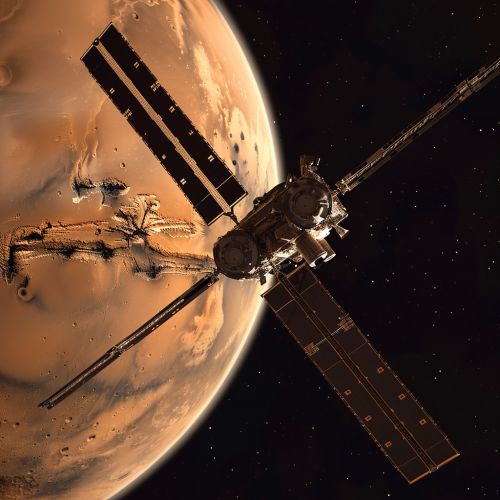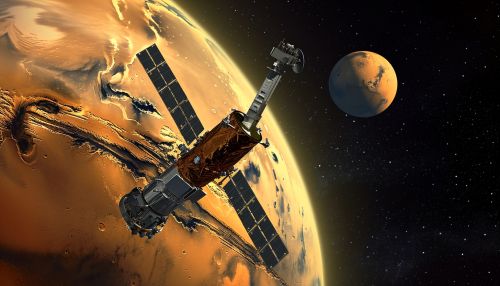Mars Reconnaissance Orbiter
Overview
The Mars Reconnaissance Orbiter (MRO) is a multipurpose spacecraft designed by National Aeronautics and Space Administration to conduct reconnaissance and exploration of Mars from orbit. Launched on August 12, 2005, the MRO has been studying the Martian atmosphere and terrain from its polar orbit since 2006, providing detailed information about the Red Planet's weather, climate, geology, and surface composition.


Design and Development
The MRO was designed and built by Lockheed Martin, with the mission managed by the Jet Propulsion Laboratory (JPL). The spacecraft's design was based on previous Mars orbiters, incorporating lessons learned from those missions. The orbiter's main body is a box-like structure, housing the spacecraft's propulsion and power systems, as well as many of its scientific instruments.
Scientific Instruments
The MRO carries a suite of scientific instruments designed to study various aspects of the Martian environment. These include the High Resolution Imaging Science Experiment (HiRISE), the Compact Reconnaissance Imaging Spectrometer for Mars (CRISM), and the Mars Climate Sounder (MCS), among others. Each instrument serves a specific purpose and contributes to the overall mission objectives.
Mission Objectives
The primary objectives of the MRO mission are to study the history of water on Mars, identify potential landing sites for future Mars missions, and serve as a relay station for data from those missions. Secondary objectives include studying the Martian climate and geology, and testing new technologies for future Mars exploration missions.
Mission Timeline
The MRO was launched on August 12, 2005, from Cape Canaveral Air Force Station in Florida. After a seven-month journey, the spacecraft arrived at Mars on March 10, 2006. Since then, the MRO has been conducting science operations from its polar orbit, providing valuable data about the Red Planet.
Discoveries
The MRO has made numerous significant discoveries during its mission. These include evidence of liquid water on the Martian surface, detailed images of potential landing sites for future missions, and data on Martian weather and climate. The orbiter's findings have greatly expanded our understanding of Mars and its potential for past or present life.
Future Plans
The MRO continues to operate as of 2021, and there are plans to extend its mission further. The spacecraft's longevity and continued functionality have made it a valuable asset for Mars exploration, and it is expected to continue contributing to our understanding of the Red Planet for years to come.
